Science Meets Longevity
I’ve been asking the same question for a long time:
Why do we age, and can we fight it?
This site is my way of chasing the answers and sharing the tools, insights, and science I find along the way.

Journey Into the Biology of Time
I’ve been asking the same question for a long time:
Why do we age, and can we fight it?
This site is my way of chasing the answers and sharing the tools, insights, and science I find along the way.

Journey Into the Biology of Time
I’ve been asking the same question for a long time:
Why do we age, and can we fight it?
This site is my way of chasing the answers and sharing the tools, insights, and science I find along the way.
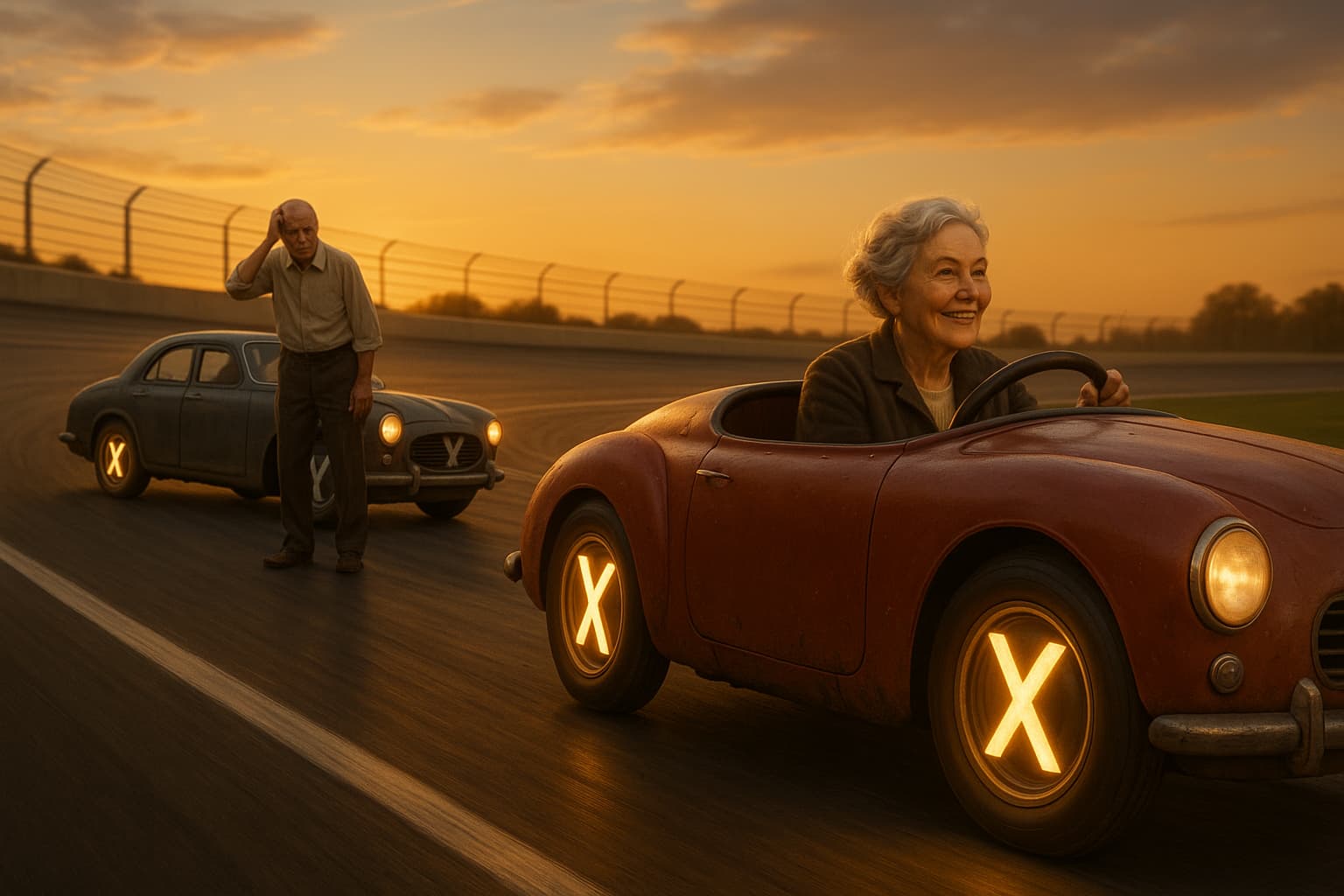
Take a look at the oldest people in the world and you’ll notice a pattern. The majority are women. From supercentenarians blowing out candles at 110 to your grandmother outliving your grandfather, this isn’t just anecdotal. Across the globe, women consistently outpace men in life expectancy. According to the World Health Organization, the average global life expectancy is about 75 years for women compared to 70 years for men. That five-year lead is not a fluke, it is a biological and cultural reality.
The question that keeps scientists, doctors, and curious minds buzzing is simple: why do women live longer than men? Understanding women vs men life expectancy helps us uncover the hidden forces of aging itself. Male vs female aging does not happen in the same way, and the longevity gender differences may hold keys for extending life for everyone.
If aging is a long marathon, women begin the race with sturdier shoes. They carry two X chromosomes, while men carry one X and one Y. That second X acts like a spare tire in the trunk. If a harmful mutation develops on one copy, the other can often step in to compensate. Men don’t have this luxury. With only one X, any genetic weakness is immediately exposed, leaving fewer defenses against DNA damage, one of the core hallmarks of aging.
This backup system may help women avoid certain age-related diseases earlier and gives them a small but important edge in cellular resilience. It’s like having two instruction manuals for building a house. If one page is torn, the second copy helps keep the construction on track. For men, a single error in the manual might leave the walls unstable decades later.
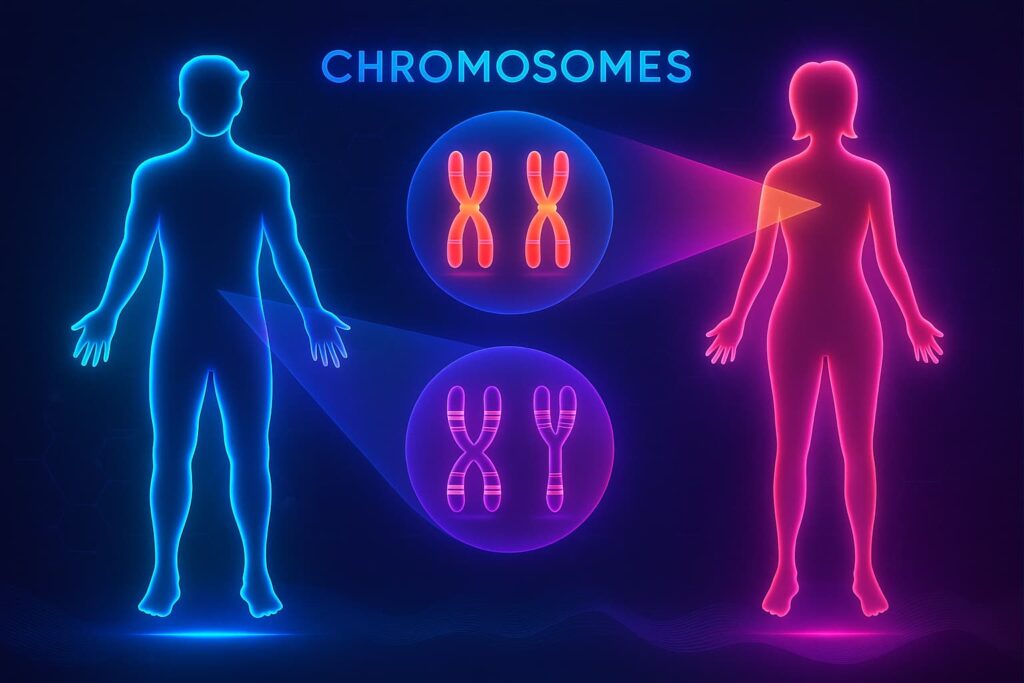
Hormones are the invisible conductors of the body’s orchestra, and their melodies differ between the sexes. Estrogen, the primary female hormone, is like a protective shield. It keeps blood vessels flexible, reduces harmful cholesterol, and even acts as a modest antioxidant against oxidative stress, slowing the cellular wear-and-tear that fuels aging. In essence, estrogen buys women more time before the cardiovascular hallmarks of aging start to weigh heavily.
Testosterone tells a more complicated story. It fuels muscle strength and reproductive vitality but also nudges men toward riskier behaviors and higher metabolic strain. Too much testosterone is like revving a car engine for the thrill of speed exciting in youth, but it burns through fuel faster and wears down the parts sooner. This hormonal gamble may explain why women live longer than men, since men often pay a biological price for their testosterone-driven vigor.
Every cell is powered by mitochondria, tiny engines churning out the energy that keeps us alive. But here’s a twist: mitochondrial DNA is inherited only from the mother. Over evolutionary time, this maternal line of inheritance has fine-tuned mitochondria in females more than in males. It’s as if women are given slightly more efficient batteries at birth, while men run on a model that was never tested as thoroughly.
As we age, mitochondrial dysfunction is one of the most damaging hallmarks of aging. Energy production falters, and oxidative stress increases, wearing down cells from the inside. Women’s subtle mitochondrial advantage may delay this breakdown, giving them more years before the powerplants sputter. For men, the energy factories are more vulnerable, which may hasten the timeline of male vs female aging.
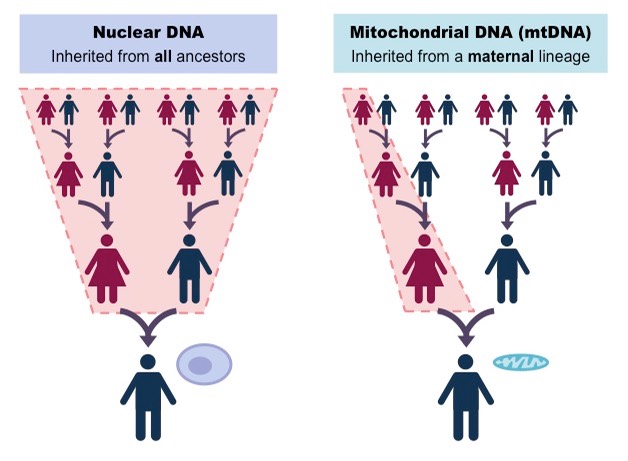
The immune system is our personal army, fighting invaders and cleaning up cellular messes. In women, this army tends to be stronger and more alert, which helps fight off infections and reduce early mortality. Think of it as having an elite defense force always on call. This heightened vigilance delays the onset of immune senescence, the age-related decline of immunity, and supports why women live longer than men.
But why do women get this advantage? Part of the reason comes from estrogen, which acts like a commander boosting the readiness of immune cells. Estrogen enhances the activity of T cells and B cells, making them faster to respond to pathogens. On the genetic side, many immune-related genes are located on the X chromosome. Since women carry two Xs, they get a double dose of these protective instructions, while men only have one. It is as if women’s immune army has extra training manuals, ensuring more soldiers know how to fight.
The trade-off is that a stronger army can sometimes turn on its own people. Women have higher rates of autoimmune diseases, where the immune system mistakenly attacks the body itself. Still, the overall balance tilts toward protection. A more robust immune system gives women better odds of making it through the long battle of life, while men are left more exposed to infections, cancers, and chronic inflammation, all deeply tied to the hallmarks of aging.
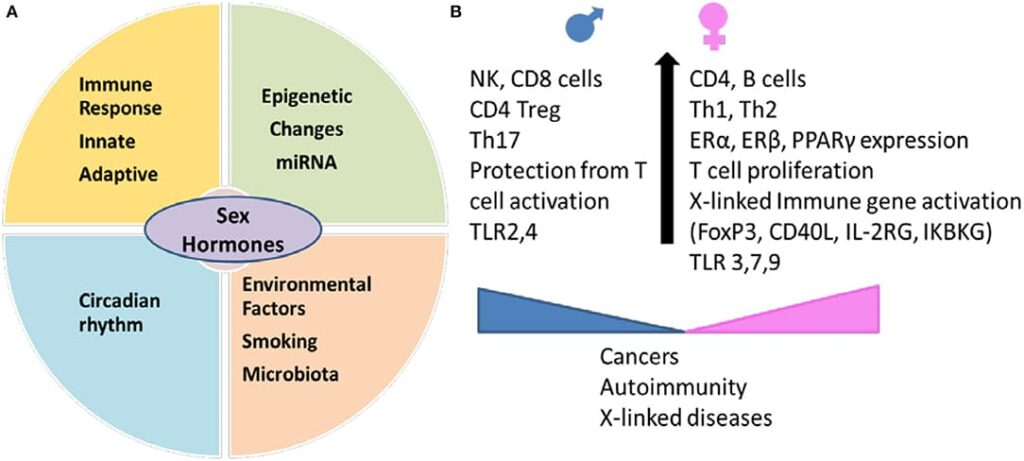
Biology is only half the story. To really understand women vs men life expectancy, we also need to look at how lifestyle shapes aging.
Men are more likely to engage in risky behaviors, from smoking and heavy drinking to speeding down highways or taking dangerous jobs. These habits take a toll on health over decades and contribute to male vs female aging differences. Even something as subtle as stress management plays a role. Women often have stronger social networks, and studies show that community and emotional support are linked with longer life.
Diet patterns also influence longevity gender differences. Historically, women have tended to eat more fruits and vegetables and pay more attention to healthcare visits. Men, on the other hand, are more likely to avoid the doctor until a problem becomes serious. This difference in health-seeking behavior might partly explain why women live longer than men.
Another key factor is cardiovascular disease. Heart attacks and strokes are leading causes of death worldwide, and men are more prone to them at younger ages. Estrogen gives women some protection before menopause, while lifestyle risks such as smoking and poor diet push men closer to danger earlier in life.
So while biology provides a foundation, everyday choices magnify the gap in women vs men life expectancy. Lifestyle habits, cultural roles, and even personality traits all weave into the complex picture of male vs female aging.
Longevity gender differences are not only written in DNA, they are also shaped by the societies we live in. Around the world, social expectations and roles affect male vs female aging in subtle but powerful ways.
Historically, men have been more exposed to wars, hazardous labor, and dangerous environments. Mining, construction, and military service have carried higher risks, leaving marks on women vs men life expectancy. Even today, men are more likely to work in physically dangerous or high-stress jobs, which increases the likelihood of earlier death.
Healthcare access and behavior also create a divide. Women generally visit doctors more often and are quicker to seek medical advice when something feels wrong. Men, by contrast, are more likely to delay checkups and avoid preventive care, which can make treatable conditions spiral into life-threatening ones. This pattern contributes to why women live longer than men in nearly every region.
Cultural norms around emotional expression play a role too. Women are often more encouraged to share stress or seek social support, while men may feel pressure to “tough it out.” Chronic stress, carried silently, increases risks for heart disease, metabolic disorders, and mental health struggles. These social patterns amplify the biological underpinnings of male vs female aging.
Taken together, culture acts like an invisible hand, nudging men and women onto different health trajectories. The result is a consistent pattern across the globe: women vs men life expectancy shows that women have the edge.
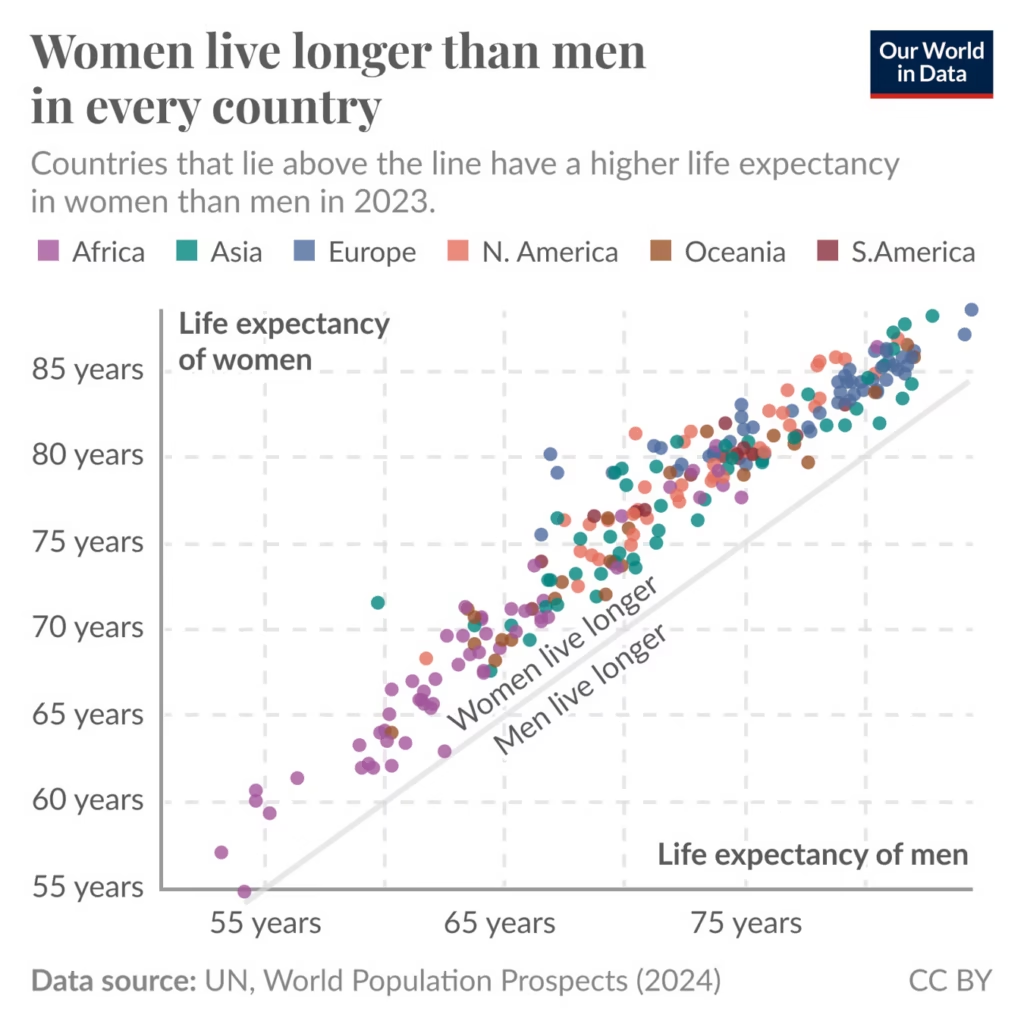
If you look at the club of centenarians, those rare individuals who live past 100, you will find that it is dominated by women. Around 80 to 85 percent of all centenarians are female. When scientists ask do women live longer than men, the answer is never more obvious than in this group of super-agers.
Why are women so overrepresented at the far edge of life? Part of it comes back to biology. Female immune systems tend to age more slowly, allowing women to remain resilient against infections later in life. Estrogen’s protective effects in earlier decades also set the stage for healthier aging trajectories. On the genetic side, that double X chromosome again provides a backup plan that supports longer survival.
But social and lifestyle factors also shape who makes it to 100. Women have historically built stronger community ties, and these social networks may help buffer against loneliness and stress. In studies of centenarians, personality traits like resilience, optimism, and emotional balance appear again and again. These patterns are more commonly reported in women, further fueling the difference in women vs men life expectancy.
The story becomes even more striking when we look at supercentenarians, people who live past 110. Nearly all of them are women. This isn’t just a curiosity of demographics. It tells us that longevity gender differences are deeply woven into both biology and culture, and understanding them may one day help unlock strategies to push human aging even further.
From chromosomes to choices, the story of women vs men life expectancy is a layered one. Biology gives women certain advantages, like the protection of estrogen, stronger immune responses, and the backup of a second X chromosome. Lifestyle magnifies the difference, as women are often more health-conscious and less likely to engage in risky behavior. Cultural roles, work patterns, and healthcare habits add another layer, all contributing to the clear longevity gender differences we see worldwide.
When researchers ask do women live longer than men, the data speaks loudly. Across nearly every country, women outlive men by an average of five years, and among the very oldest humans, women make up the overwhelming majority. Male vs female aging is not just about biology, it is about how genes, hormones, environment, and society interact over decades.
The lesson is not only that women live longer than men but also that the reasons are understandable and, in some cases, modifiable. Men who pay closer attention to health, seek preventive care, build stronger social ties, and manage stress more openly can narrow the gap. Understanding longevity gender differences does more than explain the past, it lights the way toward healthier, longer futures for everyone.